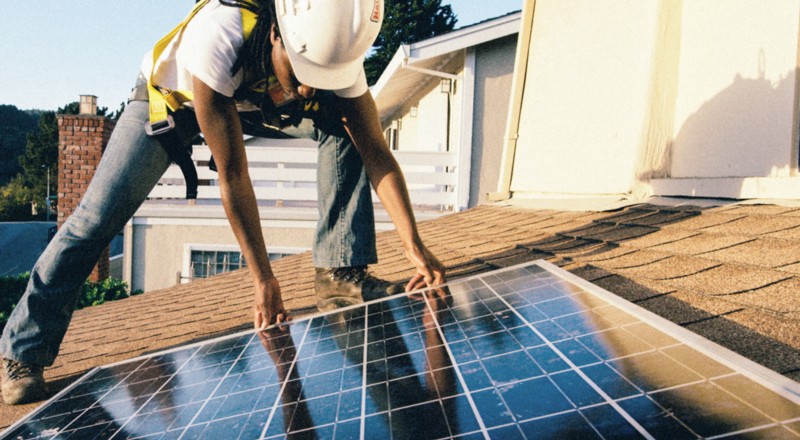It took forty years to reach one million solar installations in the U.S., but it will only take two more years to reach two million. The solar movement is firmly on its way, but the question is, is everyone — including low-income families — able to join in?
Residential solar power’s recent success points to many factors:
- growing environmental and climate concerns
- decreasing panel and system costs
- increasing electric bills
- federal tax credits and state subsidies
These factors were instrumental in moving home solar power from the early adopting fringes toward the mainstream. Momentum was building slowly but surely until $0 down solar leases and loans came along.
With the zero down packages, solar took off. Panels were flying onto rooftops in unprecedented numbers especially from the lower barriers of the solar leasing model. But it was still a game where deep pockets or good credit was needed, and for lower income families — the people who could most benefit from solar’s monthly cost savings on electricity — solar power essentially remained a non-starter.
How GRID Alternatives is Making Solar Accessible
Fortunately, into this need came GRID Alternatives. This Oakland-based nonprofit, now celebrating its 15 year anniversary, at its core provides low to no-cost solar power for low-income housing. Born in California, this organization is taking off as well with operations now in 9 states, an international program starting in Nicaragua, and a specialized program for tribal communities which has already accounted for over 500 systems for tribal member families — thereby serving some of our country’s most impoverished and overlooked residential sectors.
They do it by securing financing through a combination of state and federal incentives, rebates, homeowner contributions and of course, fundraising. In addition they became the program manager for the California Public Utility Commission’s instrumental $162 million Single-family Affordable Solar Homes incentive program (SASH), which is the first dedicated solar rebate for low-income families in the U.S.
Overall, GRID has provided almost 7,000 solar systems to low-income families, representing over $180 million worth of savings and the prevention of over a half-million tons of greenhouse gas emissions. GRID is serving people who otherwise would not be participating in the renewable energy revolution.
Further, GRID reatively designed their program to utilize volunteers to install the systems. This of course keeps their costs down, and opens up their mission for public involvement. But more importantly it provides a robust enough training and hands-on experience at the job site that interested job-seekers can progress through a series of volunteer positions and be ready for full-time installation positions in the solar industry. Free training of these new workers can also be of great benefit to low-income families.
I have volunteered for a couple of installations with GRID over the past few years, and recently joined up with them again for an installation in Menlo Park, CA, just south of San Francisco. This particular job was to be the first solar install to take place under a new program sponsored by Facebook, GRID Alternatives, and local nonprofit Menlo Spark.
Facebook, which is headquartered in Menlo Park, is the town’s largest employer and sees the program as a way to improve its immediate neighborhood in the same way it is addressing its global corporate carbon footprint. Menlo Spark is a local nonprofit committed to a carbon free Menlo Park, and with GRID Alternatives driving, the program will initially provide 10 low-income houses in Menlo Park’s Belle Haven neighborhood with solar electricity.
It is estimated the program in total will save the participating families of Belle Haven $250,000 over the next 25 years and prevent an estimated 550 tons of greenhouse gas emissions.
For the first house, GRID installed a 4.2 kW system using SunEdison panels with Enphase micro-inverters, and utilized additional cost assistance from the SASH Program. The installation will offset 41.23 tons of carbon, the equivalent of planting 969 trees, and will save the homeowner an estimated $20,000 over the system’s lifetime. To the homeowner, a great-grandmother who has lived in her home over 40 years, the monthly savings will be a huge help in supplementing her fixed income.
This is just one example of what GRID Alternatives is doing across the nation. Bringing together and combining corporate partners, sponsorships, volunteers, state and federal programs, with their own vision and compassion to make sure low-income households can also benefit from helping our environment — while saving money at the same time.
The solar movement is exploding. Thankfully with organizations like GRID Alternatives there’s room for everyone. And everyone is needed.
